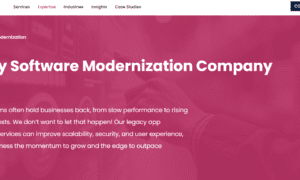As digital banking and online financial tools become more central to the customer experience, they also open the door to evolving cybersecurity threats. Attackers are getting more creative, targeting multiple access points and taking advantage of outdated protections. For financial institutions, the challenge isn’t just blocking threats—it’s doing so in a way that supports compliance, builds trust, and keeps operations running smoothly.
Today’s threat landscape has outgrown the traditional defenses of firewalls and static rules. Many breaches now originate from within, using stolen credentials obtained through phishing or social engineering. Once inside, bad actors often mimic legitimate behavior, making them harder to spot. Systems that rely solely on preset conditions can miss these patterns—especially when unusual activity stretches across channels like apps, websites, and support systems.
Today’s threat landscape has outgrown the traditional defenses of firewalls and static rules. Many breaches now originate from within, using stolen credentials obtained through phishing or social engineering. Once inside, bad actors often mimic legitimate behavior, making them harder to spot. Systems that rely solely on preset conditions can miss these patterns—especially when unusual activity stretches across channels like apps, websites, and support systems.
What’s needed is an adaptive defense strategy. Modern platforms use real-time behavioral data to monitor how users interact, what devices they use, and how transactions flow. This allows them to flag suspicious activity instantly and respond on the fly. These systems evolve with each interaction, growing smarter and more accurate over time. And while technology does the heavy lifting, trained staff and educated customers remain essential. Employees must know how to act on alerts, and users should be equipped with the tools and knowledge to recognize potential risks.
Building cybersecurity directly into the foundation of a platform—not bolting it on later—ensures smoother, more secure interactions.Building cybersecurity directly into the foundation of a platform—not bolting it on later—ensures smoother, more secure interactions. Security-by-design means identifying weaknesses early in development and integrating safeguards that feel natural within the user experience. This not only prevents future issues but also avoids friction for users.
Over time, adaptive systems offer even more value. They cut down on false positives, reduce manual intervention, and speed up resolution when issues do arise. Automated workflows and smarter case management free up fraud teams to focus on the highest-risk situations while keeping compliance efforts aligned and efficient.
Ultimately, protecting a customer-facing platform is about more than avoiding financial loss. It’s about reinforcing confidence. When customers feel their data is secure and their accounts are actively Ultimately, protecting a customer-facing platform is about more than avoiding financial loss. It’s about reinforcing confidence. When customers feel their data is secure and their accounts are actively protected, they’re more likely to stay loyal, recommend the service, and grow their relationship. In a space where trust is everything, cybersecurity becomes more than a safeguard—it becomes a competitive advantage.
Discover practical ways to strengthen digital platform defenses while enhancing the customer experience in the accompanying resource from Q2 Software, a provider of fraud and risk management solutions.
Read More From techbullion

































